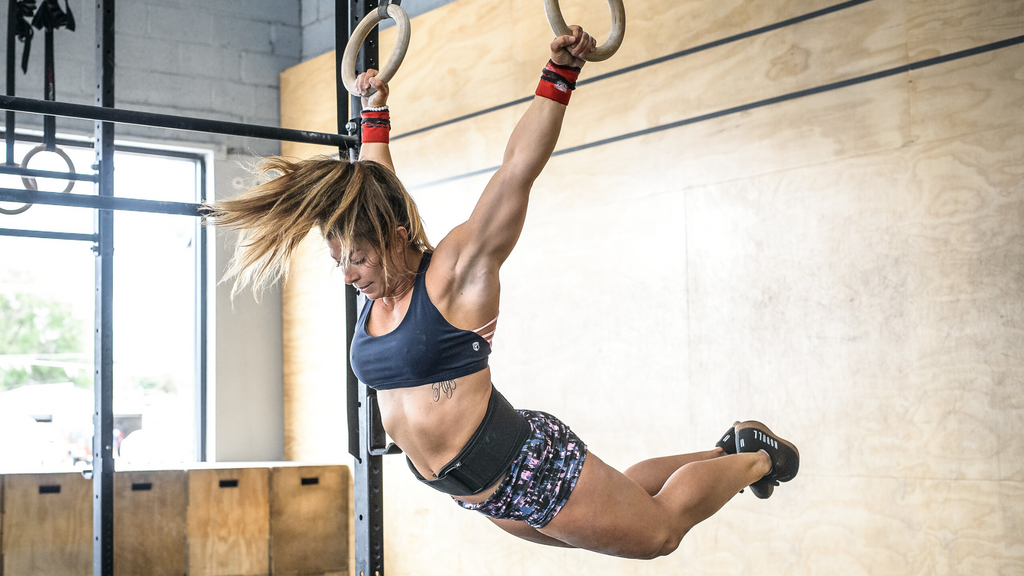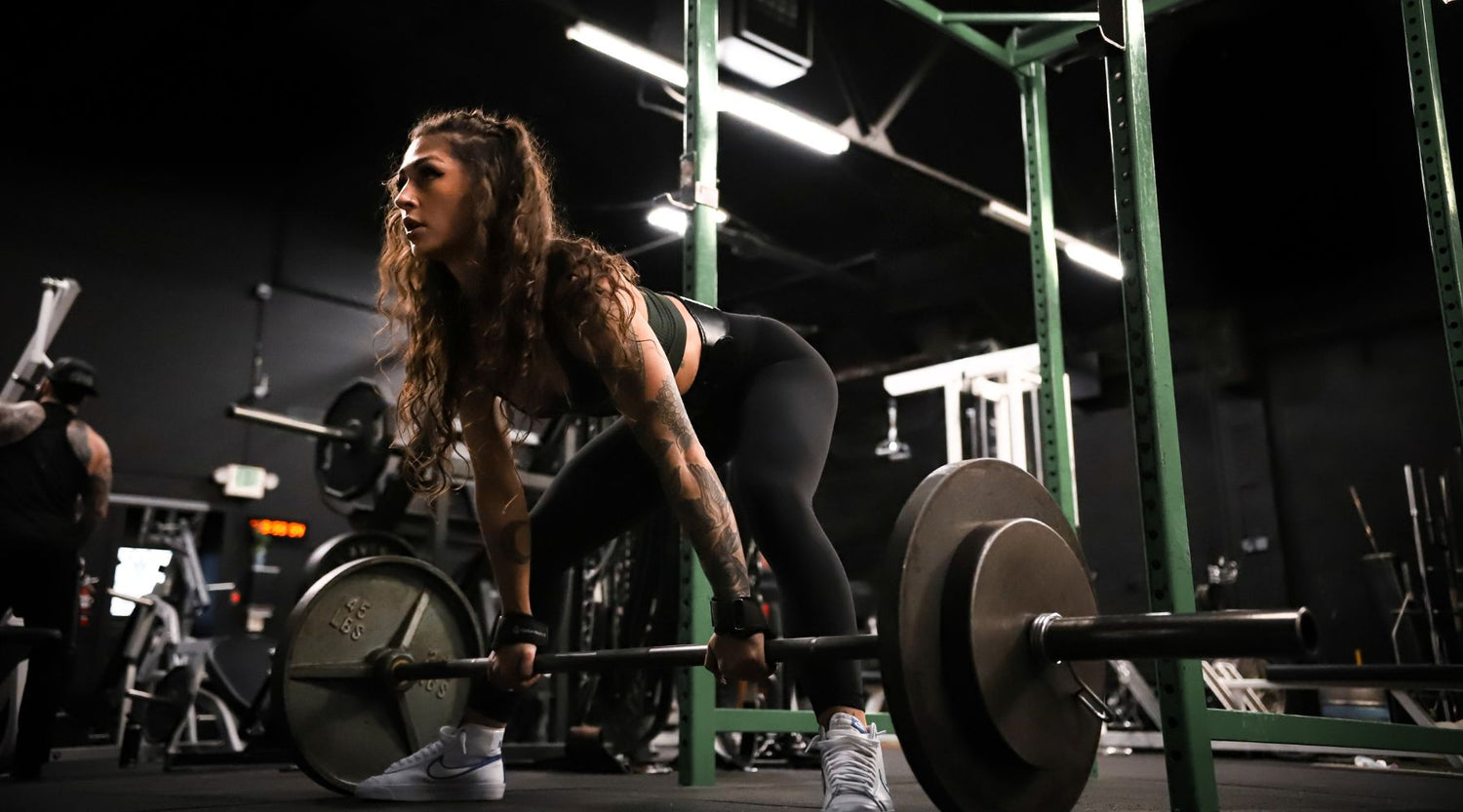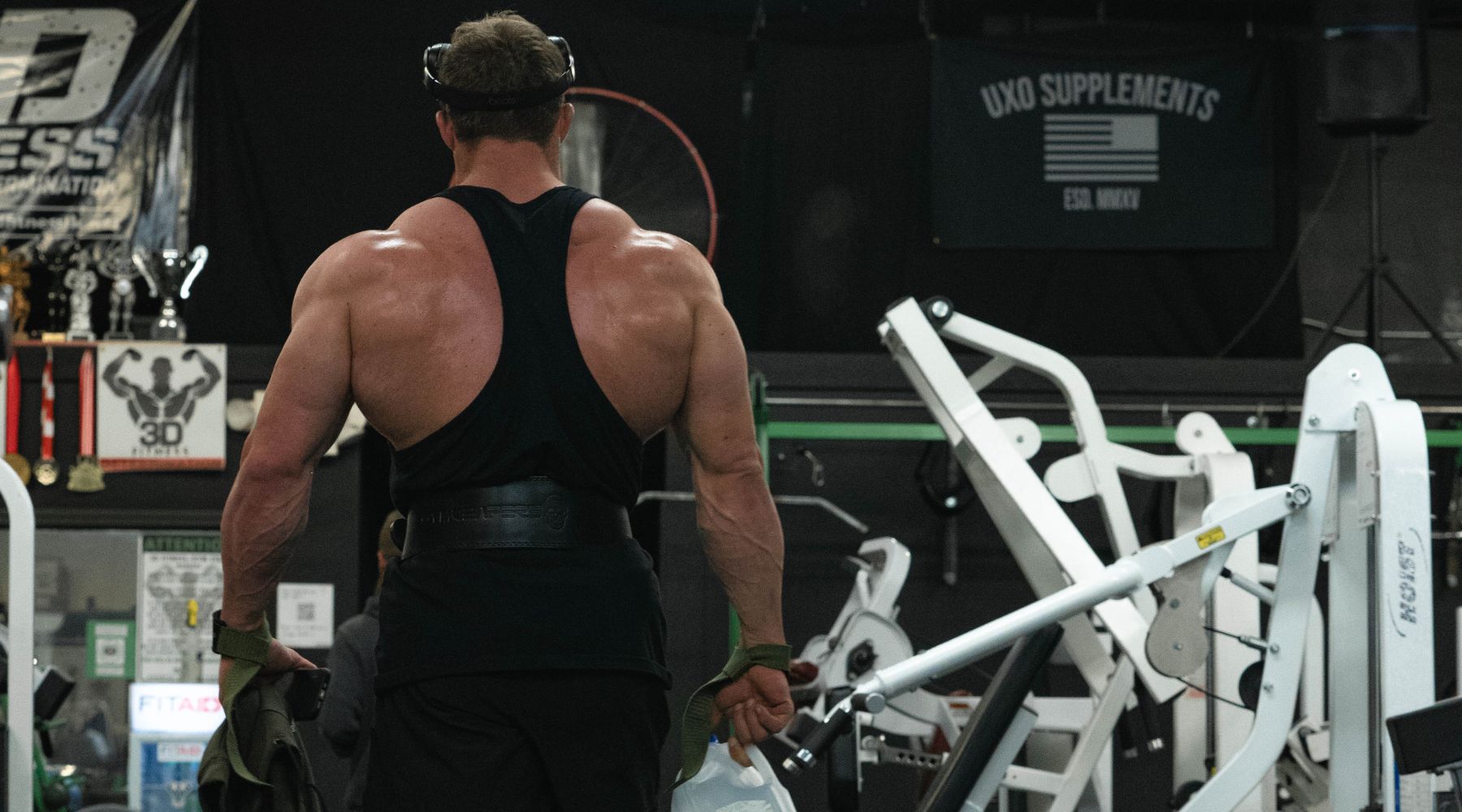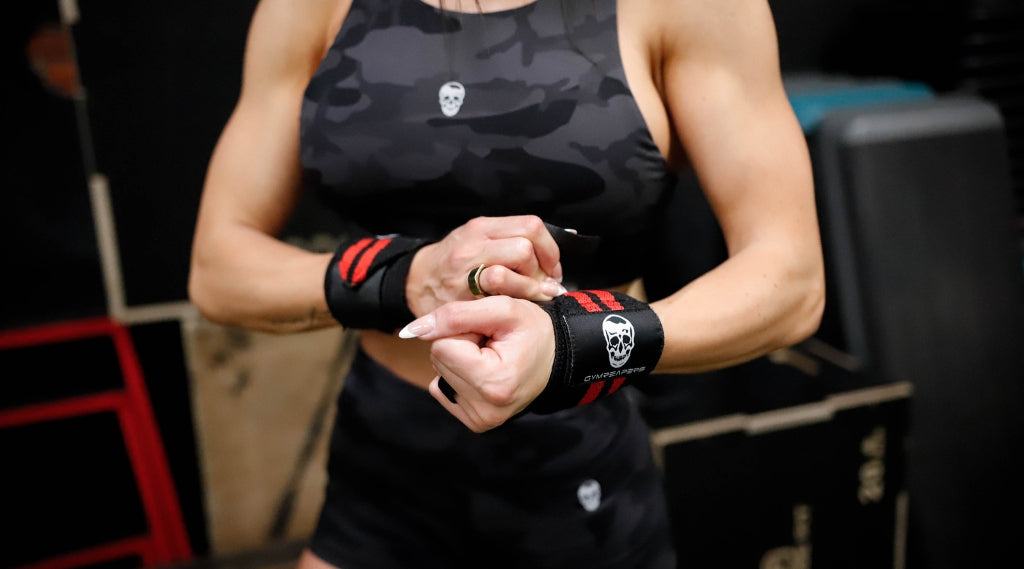As someone dedicated to CrossFit, you probably understand that traditional lifting belts don’t work well during fast-paced training. They are heavy and bulky and often get in the way more than they help.
To get a quality CrossFit belt, you must look into lightweight options, typically made of nylon. The belt should be thin enough not to limit mobility but rigid enough to offer midsection support. It should also come with a simple hook and loop closure system that lets you put it on and take it off quickly.
Of course, there is more to picking the right belt for CrossFit. Read on to learn what makes for a good belt and when to wear one to reduce the injury risk during dynamic workouts.
Key Takeaways
- The ideal CrossFit belt is made of nylon and is roughly 4” wide. It fits comfortably on your body without affecting your range of motion or starting position.
-
A good CrossFit belt has a hook and loop closure type with Velcro. It allows athletes to quickly put the belt on, tighten it in position, and loosen it during some activities.
- If you’re interested in getting the right lifting belt for CrossFit, you must learn about the nuances surrounding its width, closure type, strap length, size options, and practical use during training.
What Is The Purpose Of A Lifting Belt For Crossfit?

The purpose of a lifting belt for CrossFit is the same as that for other types of training: to provide midsection support by improving intra-abdominal pressure (IAP).
A lifting belt wraps around the midsection and applies a compressive force, which results in greater torso rigidity and a more stable position.
Maintaining a more rigid torso can reduce the injury risk and allow you to transfer force into external weights more efficiently. For instance, since the belt improves stability, your spine is less likely to flex or hyperextend during dynamic CrossFit activities.
“The purpose of the belt is to give feedback to the athlete whether they are properly activating their core to make their lift stronger, more stable and safer or not. It also helps to prevent the lower back from curving during deadlifts and squats. When the lifts are above the head, helps to avoid hyperextension of the same area.”
-Anabel Avila, Crossfitter & Nike Collaborator
In addition to keeping everything tight and in position, some EMG data shows that a lifting belt can improve erector spinae activation. These muscles run along both sides of the spine, and their primary function is straightening the back.
Contrary to what some people might believe, a lifting belt is not a tool you would use to treat or mask lower back pain. If you’re dealing with such an issue, address it first before attempting to lift heavy weights.
Related Article: 6 Things to Look for When Buying Wrist Wraps for Crossfit
What Makes A Good Crossfit Lifting Belt?
CrossFit requires a different type of lifting belt from what we traditionally recommend to the average gym-goer. Let’s look at the individual criteria:
Material
Traditional lifting belts are made of leather, but a good CrossFit belt consists of softer materials, such as nylon. As a result, the belt doesn’t feel as rigid and fits comfortably on your body.
A nylon belt doesn’t provide as much support as a 10 or 13-mm leather belt, but it still improves intra-abdominal pressure, allowing you to train hard without feeling obstructed.
You can use a traditional belt during CrossFit, but it is more likely to get in the way by affecting your starting position, limiting your range of motion, and simply feeling too bulky and rigid.
Width
A good CrossFit lifting belt will be the same width on the front and back. Most nylon belts are 4” or 5” wide, providing the necessary midsection support for safe and dynamic training.
You’ve probably seen the type of lifting belt that is wide at the back but thinner at the sides and front. I don’t recommend getting one of these because you need equal support around your midsection to increase your intra-abdominal pressure and maintain torso stability.
A belt that’s wider on the back won’t necessarily provide more support because it might not cover enough of the stomach to increase your IAP.
Closure Type

The belt you choose for CrossFit should come with a hook and loop closure type. Unlike a traditional prong setup, hook and loop means you have a long piece of fabric with Velcro closure on one side and a buckle on the other end.
Here’s a brief look at how you would use that closure type:
- Put the belt around your midsection
- Take the long piece of fabric and feed it through the buckle
- Guide the piece of fabric between the two rollers on the buckle (in the opposite direction)
- Hold the buckle in place while pulling the piece of fabric to tighten the belt around your waist
- Close the belt in position with the Velcro
The advantage of a hook-and-loop system is that you can more easily put the belt on or loosen it when necessary. That could be highly beneficial during dynamic workouts, where you jump from one activity to another.
For instance, you might do squats with the belt tight around your waist, loosen it up, and jump into a set of pull-ups.
Strap Length And Width
Most good nylon lifting belts on the market will come with a long, wide strap that locks in position with Velcro, but be careful before purchasing.
Some belts come with a short or thin strap piece that doesn’t close as firmly and could come loose in the middle of a heavy set. Plus, a short strap would mean you don’t have as much room to loosen the belt and keep it on your waist. You would have to remove it and put it on multiple times per workout.
Ideally, you should go for a belt with a 1.5-2” wide strap that covers at least 10” when you fasten it around your waist. The strap should go from your belly button to the side of your torso, possibly even reaching your lower back.
The longer the Velcro piece and strap, the more securely you can tighten the belt, resting assured that it will stay in position, even during the most vigorous activities.
Waist Size
One final thing to consider when purchasing a lifting belt for CrossFit is your waist size. Like traditional lifting belts, nylon belts come in multiple sizes, including small, medium, and large.
The right size belt is crucial for being able to tighten it in position and get the necessary support without worrying that the Velcro closure might give out and leave you unsupported in the middle of an intense set.
Speaking of that:
How Do I Choose The Right Size For A Crossfit Lifting Belt?

Here is how to pick the right size for a CrossFit belt:
-
Get a tape measure and wrap it around your waist. A self-tightening tape is the easiest to use, but even a basic one will work.
-
Find the bottom of your ribcage and the top of your pelvic bone, and position the tape in the middle between the two. That would usually mean at the belly button level or slightly higher.
-
Relax your belly––don’t expand it or suck it in for the measurement.
-
Tighten the tape around your waist so it fits snugly but not to the point where it compresses fat tissue. You can take the measurement shirtless or while wearing a T-shirt or tank top, which trainees traditionally wear when working out.
- Write down your measurement.
Once you have your measurement, check out what size belt would work great for you. For instance, the quick-locking weightlifting belt by Gymreapers has the following sizes:
- XS - 23 to 27” (58 to 69 cm)
- S - 27 to 31” (69 to 79 cm)
- M - 31 to 36” (79 to 91 cm)
- L - 36 to 40” (91 to 102 cm)
- XL - 40 to 45” (102 to 114 cm)
- XXL - 45 to 49” (114 to 124 cm)
Different Types of Lifting Belts For Crossfit: 2 Picks
1. Gymreapers Quick Locking Weightlifting Belt (With Patches)

Key Features:
- Price: $39.99
- Waist size options: XS, S, M, L, XL, and XXL
- Width: 4” throughout
- Closure type: hook and loop with a buckle
- Material: durable nylon with Velcro fastening
- Color options: black
- Warranty: lifetime replacement guarantee
Our Thoughts:
The quick-locking lifting belt by Gymreapers is the ideal solution for CrossFitters looking to optimize their performance and reduce injury risk. This belt is made of 100 percent durable nylon and has a long and wide strap that locks the belt in position with Velcro.
Its thickness is approximately one inch, but the belt is incredibly flexible, fits flush to your body, and helps you retain your mobility and freedom of movement while training.
You also get a solid 4” width throughout, which is ideal for most trainees and provides the necessary midsection support. The hook and loop closure system with a buckle makes it effortless to put the belt on or loosen it up when you don’t need as much abdominal support.
The only real drawback of this particular belt is that it only comes in black. Fortunately, the upside is that it has a solid design, a prominent Gymreapers logo, and black fits well with many colors.
You also get a lifetime replacement guarantee should anything go wrong with the belt.
Highlights
- It comes with a durable steel release roller
- It consists of high-quality nylon and excellent stitching that ensure durability
- You get 4” of width throughout for great midsection support
- The Velcro closure is of excellent quality and ensures a tight and secure fit
Drawbacks
- You only get one color option (black)
2. Gymreapers Quick Locking Weightlifting Belt

Key Features:
- Price: $34.96
- Waist size options: XS, S, M, L, XL, and XXL
- Width: 4” throughout
- Closure type: hook and loop with a buckle
- Material: nylon with Velcro fastening
- Color options: 11, including camo, navy, and red
- Warranty: lifetime replacement guarantee
Our Thoughts:
This quick-locking lifting belt by Gymreapers is almost identical to the one we looked at in the previous point. It comes with the same waist size options (from SX to XXL), has the same 4” width, and uses the same hook and loop closure system.
Despite costing just shy of $35, the belt is made of high-quality nylon and comes with excellent stitching, which means the belt will last for many years. The lifetime guarantee offered by Gymreapers is a testament to the belt’s quality.
For the more fashionable athletes, Gymreapers provide 11 fantastic color options: midnight camo, Woodland camo, white camo, black, military green, gray, tan, navy, red, purple, and pink.
You can see how all of these colors look here.
Highlights
- Affordable price of a high-quality product
- Quick-locking closure type, allowing you to easily put the belt on, loosen it and take it off
- 11 color options that fit
- Lifetime guarantee
Drawbacks
- It might not provide the necessary support for the heaviest weights
When Should You Wear A Lifting Belt In Crossfit?

When Doing Certain Compound Lifts
You should limit your belt use to compound movements. For example, wearing a belt during heavy overhead presses and snatches can provide the necessary torso support to prevent your lower back from hyperextending.
Similarly, wearing a belt on deadlifts and rows can reduce lower back rounding.
However, you don’t always need a belt during compound movements. For example, you won’t get much out of a belt during pull-ups, kipping pull-ups, push-ups, bodyweight squats, etc.
When Going Heavy And Hard
The second scenario where a lifting belt might help is when going heavy and hard on compound exercises. I recommend using a belt when:
- Lifting at least 75 to 80+ percent of your 1RM
- Doing long sets on compound lifts (8-10+ reps)
- Performing complex sequences, where you jump from one exercise to the next
The caveat for the last recommendation is that you might not need a belt on every exercise of a particular sequence. In such cases, having a quick-locking belt helps because you can loosen it when necessary and tighten it back up in just a few seconds.
Frequently Asked Questions
What Is The Best Material For A Crossfit Lifting Belt?
Nylon is a more suitable material for a CrossFit belt because it provides decent support without impairing your mobility.
Should I Get A Tapered or Straight Cut Lifting Belt For Crossfit?
Get a straight-cut lifting belt because these provide better midsection support. A tapered belt might cover more of your back, but it fails to increase intra-abdominal pressure in the same way because it is narrower at the front.
Can Wearing A Lifting Belt For Crossfit Increase My Risk of Injury?
So long as you maintain proper form, lift weights you can handle, and listen to your body, a lifting belt will not pose a threat.
People at risk of an injury are typically those who think that a lifting belt is a magic tool that allows them to use twice the weight they usually lift.
Should I Get A Customized Lifting Belt For Crossfit?
A custom lifting belt is not necessary for the majority of CrossFitters. Getting a quality, straight-cut lifting belt made of nylon will provide all the support you need.
Are All Crossfit Belts The Same Width?
There are several width options for CrossFit belts. The two most common ones are 4” and 5”. There are also narrower options and those wider at the back but narrower at the front (tapered).
- Learn More: 7 Different Types of Lifting Belts













Leave a comment
All comments are moderated before being published.
This site is protected by hCaptcha and the hCaptcha Privacy Policy and Terms of Service apply.